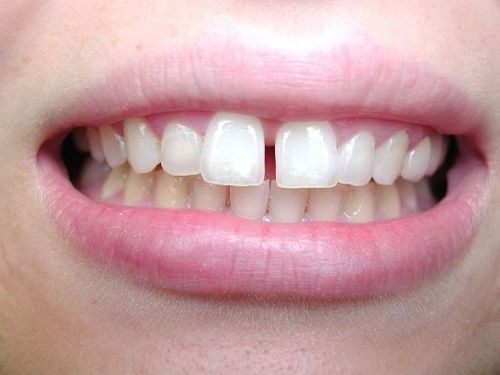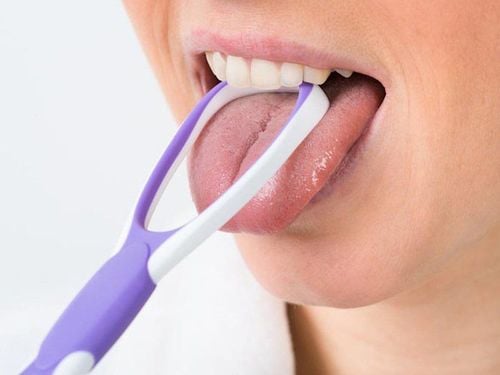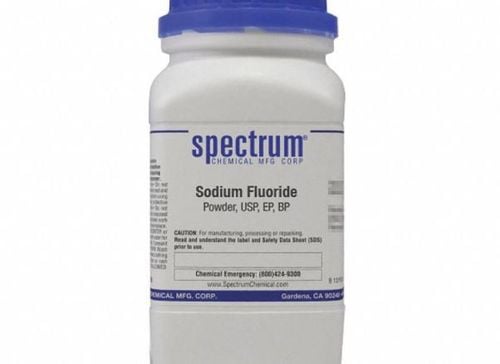This is an automatically translated article.
The article was professionally consulted with Specialist Doctor II Nguyen Khanh Nam - Doctor of Dental - Jaw - Facial - Department of General Surgery - Vinmec Nha Trang International General Hospital.Whether the filling has any effect or not depends on many factors. However, many studies have shown that the collisions encountered during the filling process can be part of the cause of damage to the adjacent teeth after filling.
1. Does dental filling have any effect?
Many studies have shown that the collisions encountered during the filling process can be part of the cause of damage to the adjacent teeth after filling. Specifically, a study on 750 tooth surfaces with good shape or with decay limited to the enamel layer adjacent to the newly filled teeth showed that on average, after 4.9 years, 34% of adjacent tooth surfaces had decay in the enamel layer. enamel and 27.2% had caries down to the soft tissue layer. On adjacent surfaces where the enamel layer was damaged at the time of filling, 57.3% continued to wear away the enamel layer, while 42.7% had spread to the dentin layer.
People who do not take care of their teeth carefully after fillings are more at risk of tooth decay after fillings. At the same time, the filling procedures themselves also cause damage to the adjacent tooth surfaces. Dentists should be aware of this risk and take effective measures to prevent collisions during fillings, and should check the condition of adjacent teeth at each follow-up visit.
2. Are fillings painful?
Painful fillings no longer depend on many factors and each person's pain tolerance level. A day or two after the procedure, you may feel some discomfort or sensitivity in the area where the tooth was filled. If you experience severe pain, swelling, or discharge, see your dentist right away as it could be a sign of an infection or need additional treatment such as a root canal.
You may also feel your gums a little rough or soft for a few days, especially when brushing or flossing. During the first time after filling, you should abstain from foods and drinks that are too cold or hot to avoid more sensitive teeth.
The level of pain after filling depends on many factors, notably:
The size and depth of the tooth decay; Location of carious teeth; Number of decayed teeth.
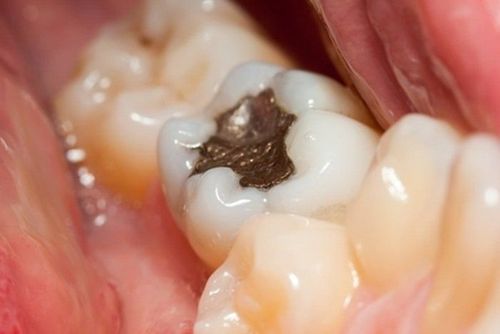
Trám răng đau không còn tùy thuộc vào nhiều yếu tố
3. How long does a filling last?
The life of a dental filling lasts about 10 years on average, depending mainly on the type of material used for filling.
| Loại vật liệu trám răng | Thời gian trung bình |
| Hỗn hợp bạc amalgam | 15 năm |
| Nhựa composite | 7 năm |
| Sứ | 15 năm |
| Ionomer thủy tinh | 5 năm |
In addition to the material used, other factors that affect the longevity of the filling include:
Eating habits; Dental hygiene; Trauma to the tooth encountered; Damage to the teeth around the filling; Teeth grinding while sleeping.
4. How long does it take to fill a tooth?
In addition to "does the filling have any effect" or "how long does the filling last?", the question of how much time it takes to fill a tooth is also of great interest to many people. The average time to fill a small piece is 20-30 minutes, teeth with more cavities or deeper will take longer to fill. The filling process is done as follows:
Dry and apply numbing gel to the area to be filled; When the gums are numb, inject a local anesthetic such as lidocaine; Use drill bit to remove tooth decay; Disinfect the hole after drilling and fill the hole with fillings; Check your bite to make sure it's even and polished.
5. What anesthetics are used in dental fillings?
Anesthesia is indispensable when filling teeth with the effect of reducing pain and discomfort during the procedure. Before filling your teeth, you can ask your doctor about the type of anesthetic prescribed and reasons for extra peace of mind.
Some commonly used anesthetics when filling teeth include:
Lidocaine: Is one of the most commonly used anesthetic gels in fillings; Benzocaine: Used as a numbing gel in adults and children over 2 years of age; Epinephrine: Helps the anesthetic last longer and work more effectively. You should tell your doctor if you are allergic to any anesthetic. If you are worried, your doctor can prescribe nitrous oxide (laughing gas) through a mask, in addition to reducing anxiety and fear, it also has an analgesic effect.
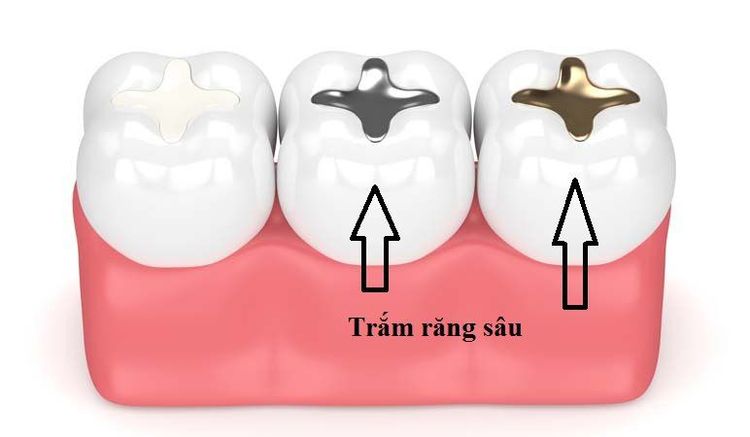
Trám răng được bao lâu là thắc mắc của nhiều người
6. When should dental fillings be changed?
Dentists can help you detect filling-related problems early through routine checkups. Fillings need to be replaced when experiencing the following conditions:
Detecting that the filling is no longer firmly attached to the tooth or there are signs of bacterial invasion through the probe; Detect tooth decay under the filling or in the surrounding area through X-ray; Filled teeth are often painful or sensitive. 7. What foods are easy to damage dental fillings? Need to avoid or limit the use of the following foods to protect the fillings:
Sugary foods are the biggest factor that reduces the life of the fillings, they easily create conditions for bacteria to grow and chemical reactions that wear down tooth enamel, creating new cavities underneath the filling; Biting on hard candy, nuts, and ice can wear and tear the filling; Gum, beef jerky, marshmallows or smoothies and other sticky foods; Beverages such as tea and coffee can stain composite resin fillings. In summary, the collisions encountered during the filling process can be part of the cause of damage to neighboring teeth. Therefore, dentists should be aware of this risk and take effective measures to prevent collisions during fillings, and should check the condition of adjacent teeth at each follow-up visit.
To examine and treat dental problems, you can go to the Department of Odonto-Stomatology - Vinmec International General Hospital. Currently, Vinmec is one of the leading prestigious hospitals in the country, trusted by a large number of patients for medical examination and treatment. Not only the physical system, modern equipment: 6 ultrasound rooms, 4 DR X-ray rooms (1 full-axis machine, 1 light machine, 1 general machine and 1 mammography machine) , 2 DR portable X-ray machines, 2 multi-row CT scanner rooms (1 128 rows and 1 16 arrays), 2 Magnetic resonance imaging rooms (1 3 Tesla and 1 1.5 Tesla), 1 room for 2 level interventional angiography and 1 room for bone mineral density measurement... Vinmec is also the place to gather a team of experienced doctors and nurses who will greatly assist in diagnosis and early detection. abnormal signs of the patient's body. In particular, with the space designed according to 5-star hotel standards, Vinmec ensures to bring the patient the most comfort, friendliness and peace of mind.
Reference sources: webmd.com, healthline.com







